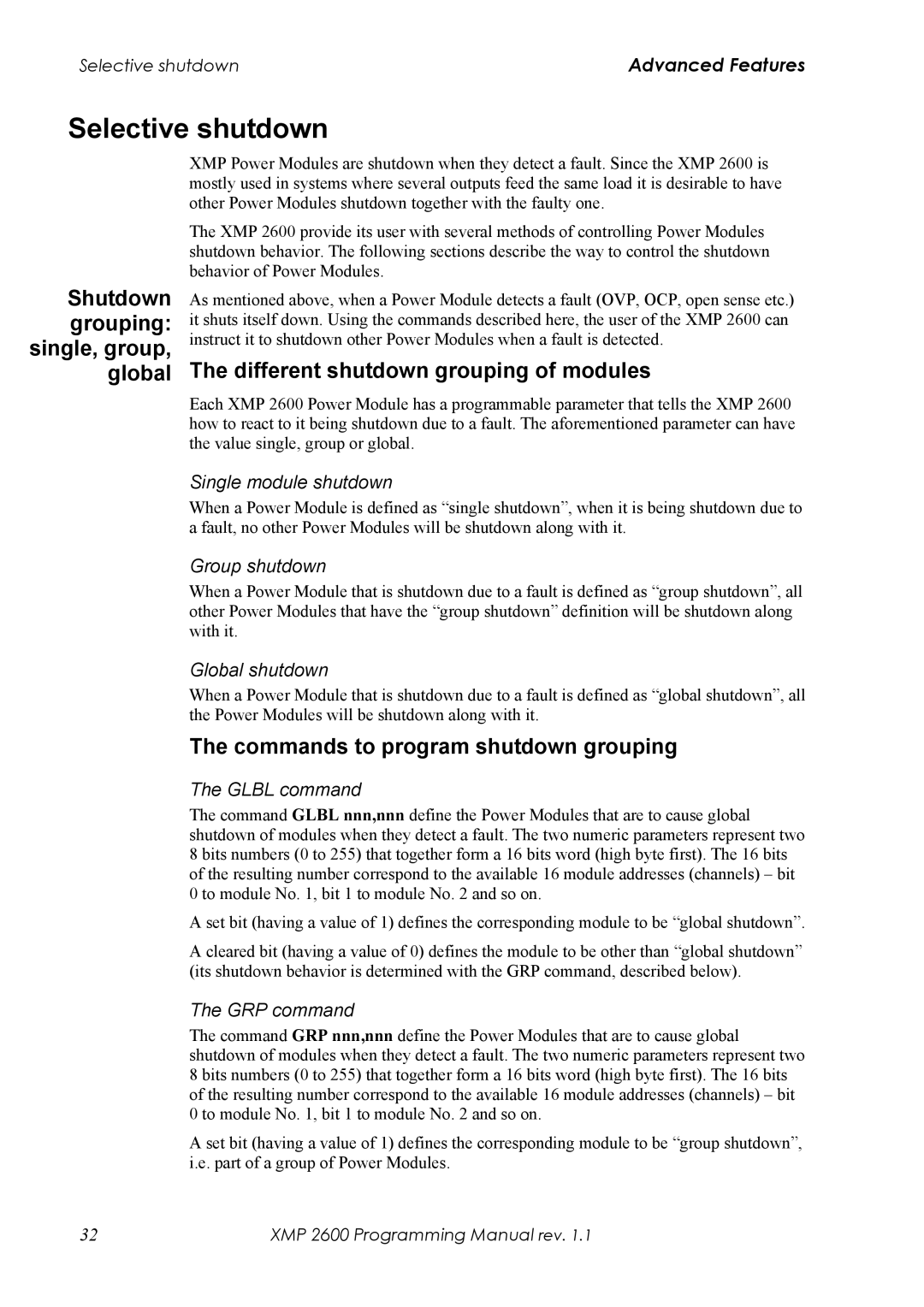Selective shutdown | Advanced Features |
Selective shutdown
Shutdown grouping: single, group, global
XMP Power Modules are shutdown when they detect a fault. Since the XMP 2600 is mostly used in systems where several outputs feed the same load it is desirable to have other Power Modules shutdown together with the faulty one.
The XMP 2600 provide its user with several methods of controlling Power Modules shutdown behavior. The following sections describe the way to control the shutdown behavior of Power Modules.
As mentioned above, when a Power Module detects a fault (OVP, OCP, open sense etc.) it shuts itself down. Using the commands described here, the user of the XMP 2600 can instruct it to shutdown other Power Modules when a fault is detected.
The different shutdown grouping of modules
Each XMP 2600 Power Module has a programmable parameter that tells the XMP 2600 how to react to it being shutdown due to a fault. The aforementioned parameter can have the value single, group or global.
Single module shutdown
When a Power Module is defined as “single shutdown”, when it is being shutdown due to a fault, no other Power Modules will be shutdown along with it.
Group shutdown
When a Power Module that is shutdown due to a fault is defined as “group shutdown”, all other Power Modules that have the “group shutdown” definition will be shutdown along with it.
Global shutdown
When a Power Module that is shutdown due to a fault is defined as “global shutdown”, all the Power Modules will be shutdown along with it.
The commands to program shutdown grouping
The GLBL command
The command GLBL nnn,nnn define the Power Modules that are to cause global shutdown of modules when they detect a fault. The two numeric parameters represent two 8 bits numbers (0 to 255) that together form a 16 bits word (high byte first). The 16 bits of the resulting number correspond to the available 16 module addresses (channels) – bit 0 to module No. 1, bit 1 to module No. 2 and so on.
A set bit (having a value of 1) defines the corresponding module to be “global shutdown”.
A cleared bit (having a value of 0) defines the module to be other than “global shutdown” (its shutdown behavior is determined with the GRP command, described below).
The GRP command
The command GRP nnn,nnn define the Power Modules that are to cause global shutdown of modules when they detect a fault. The two numeric parameters represent two 8 bits numbers (0 to 255) that together form a 16 bits word (high byte first). The 16 bits of the resulting number correspond to the available 16 module addresses (channels) – bit 0 to module No. 1, bit 1 to module No. 2 and so on.
A set bit (having a value of 1) defines the corresponding module to be “group shutdown”, i.e. part of a group of Power Modules.
32 | XMP 2600 Programming Manual rev. 1.1 |
